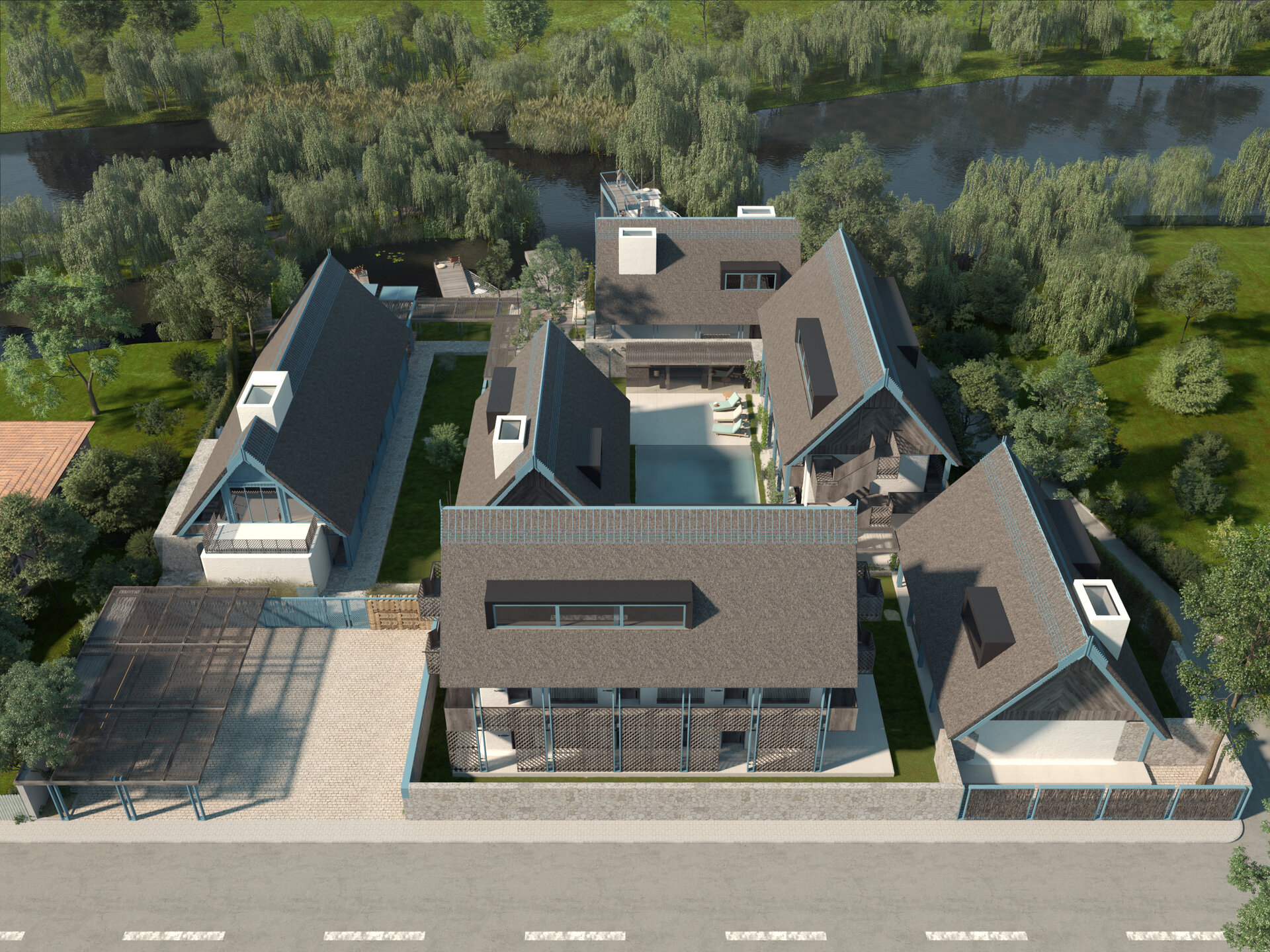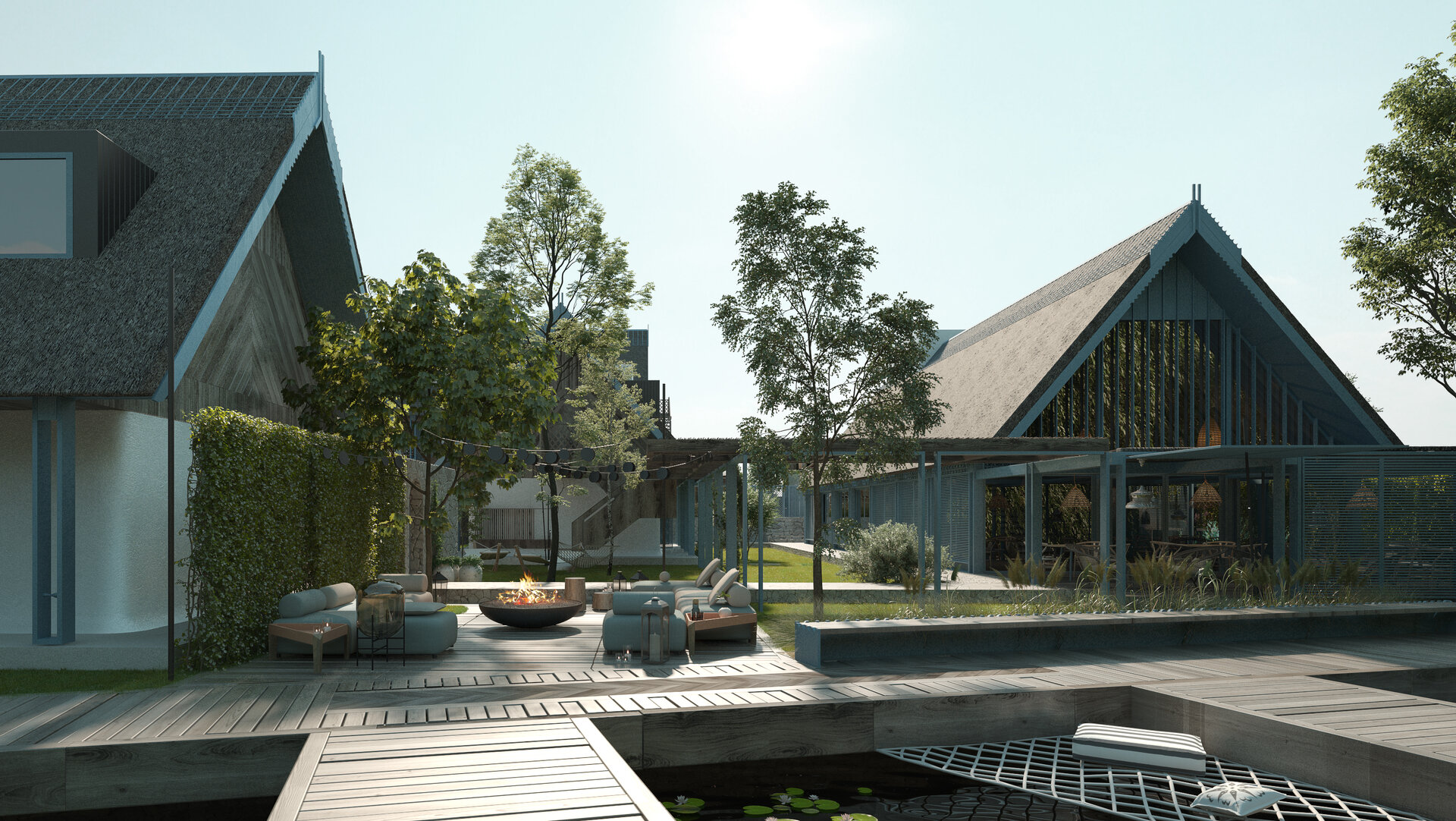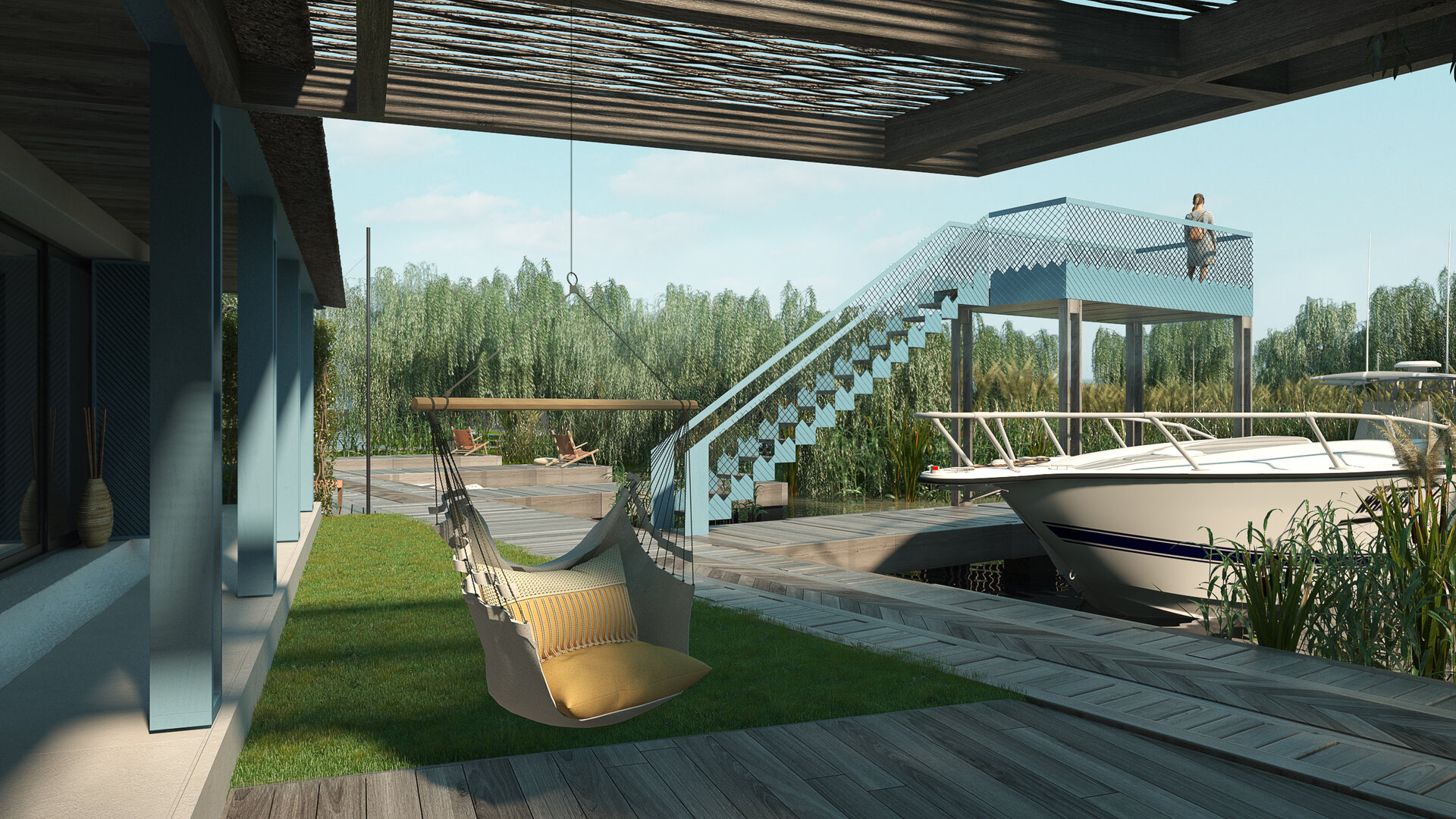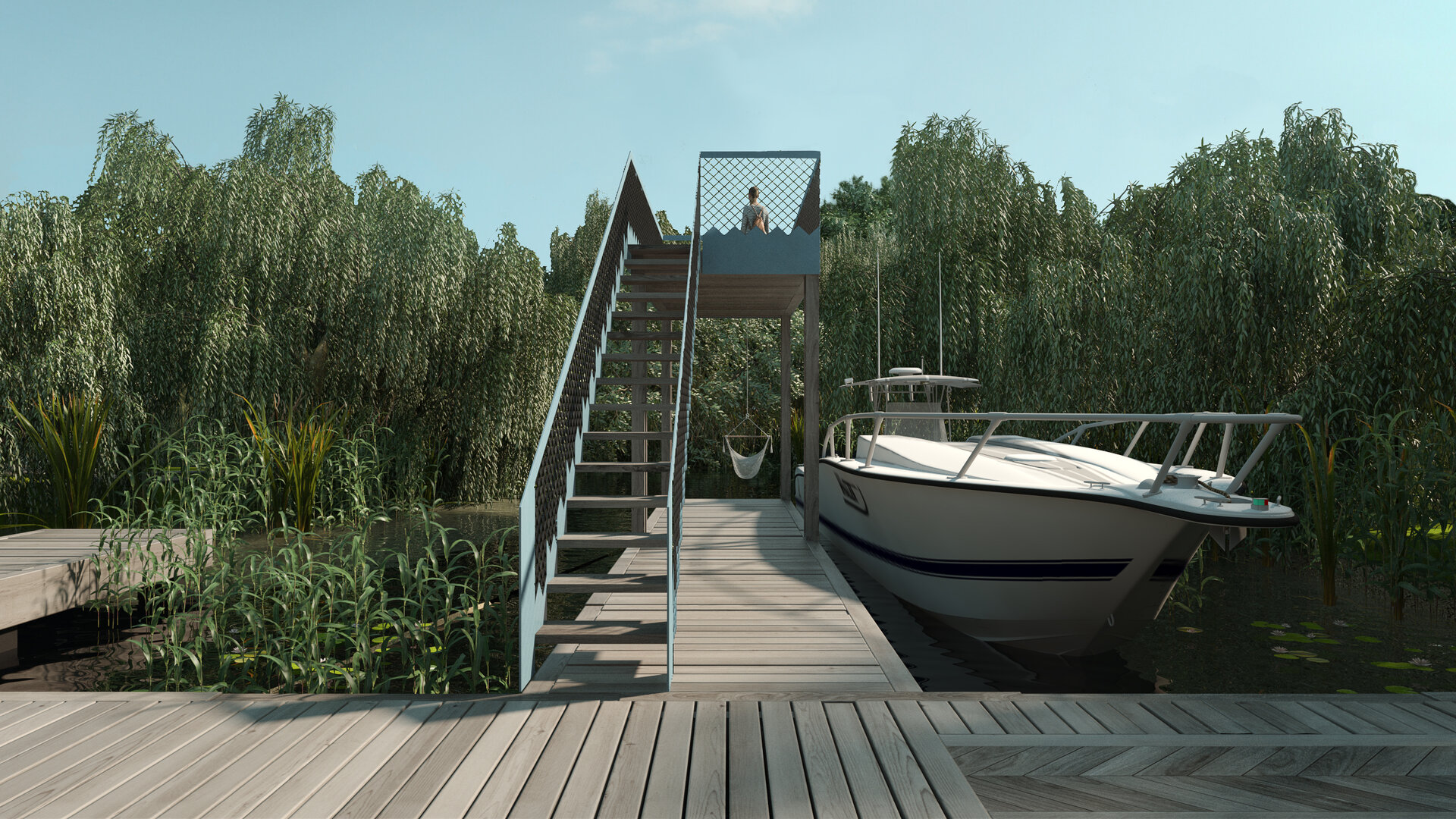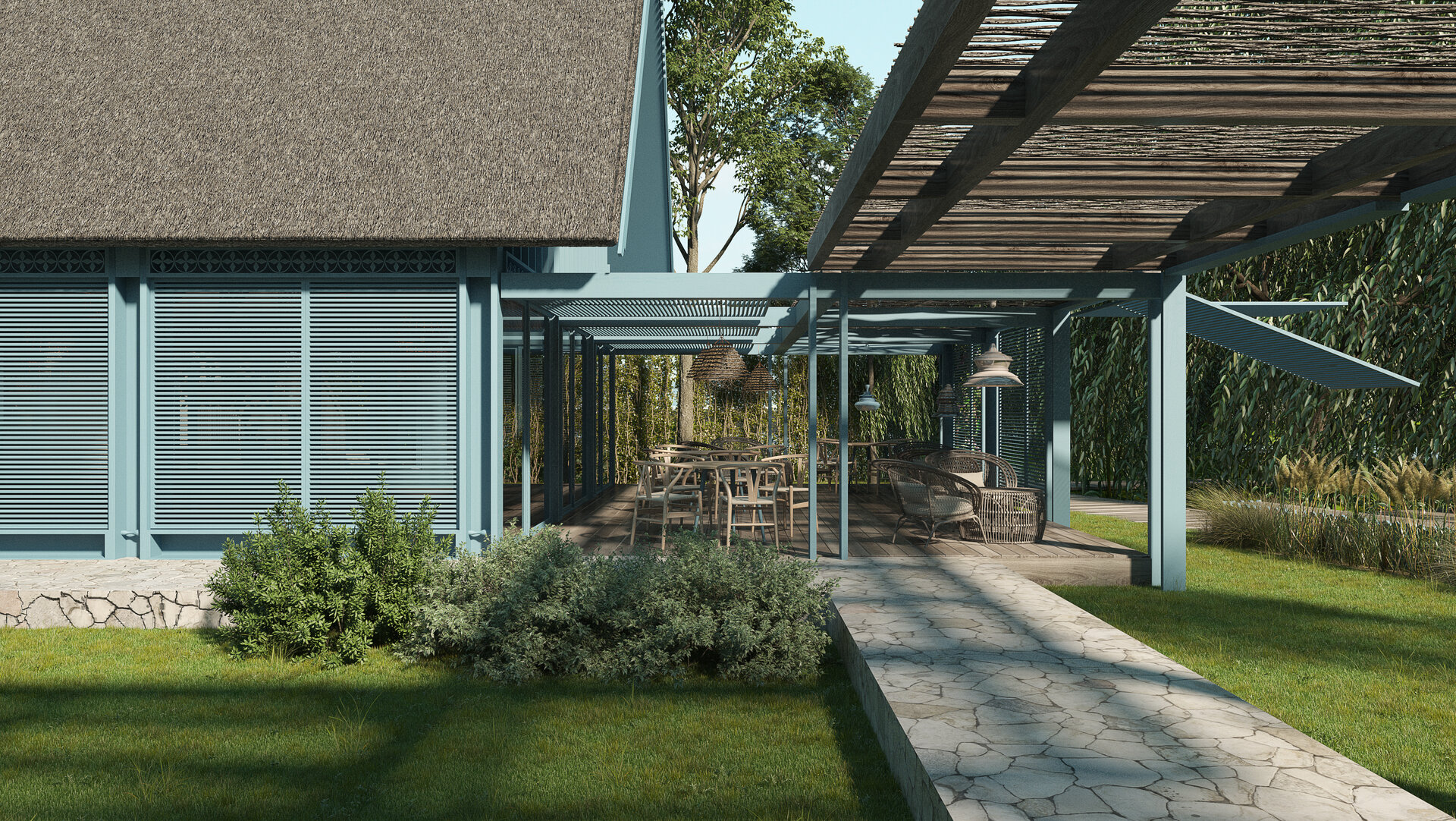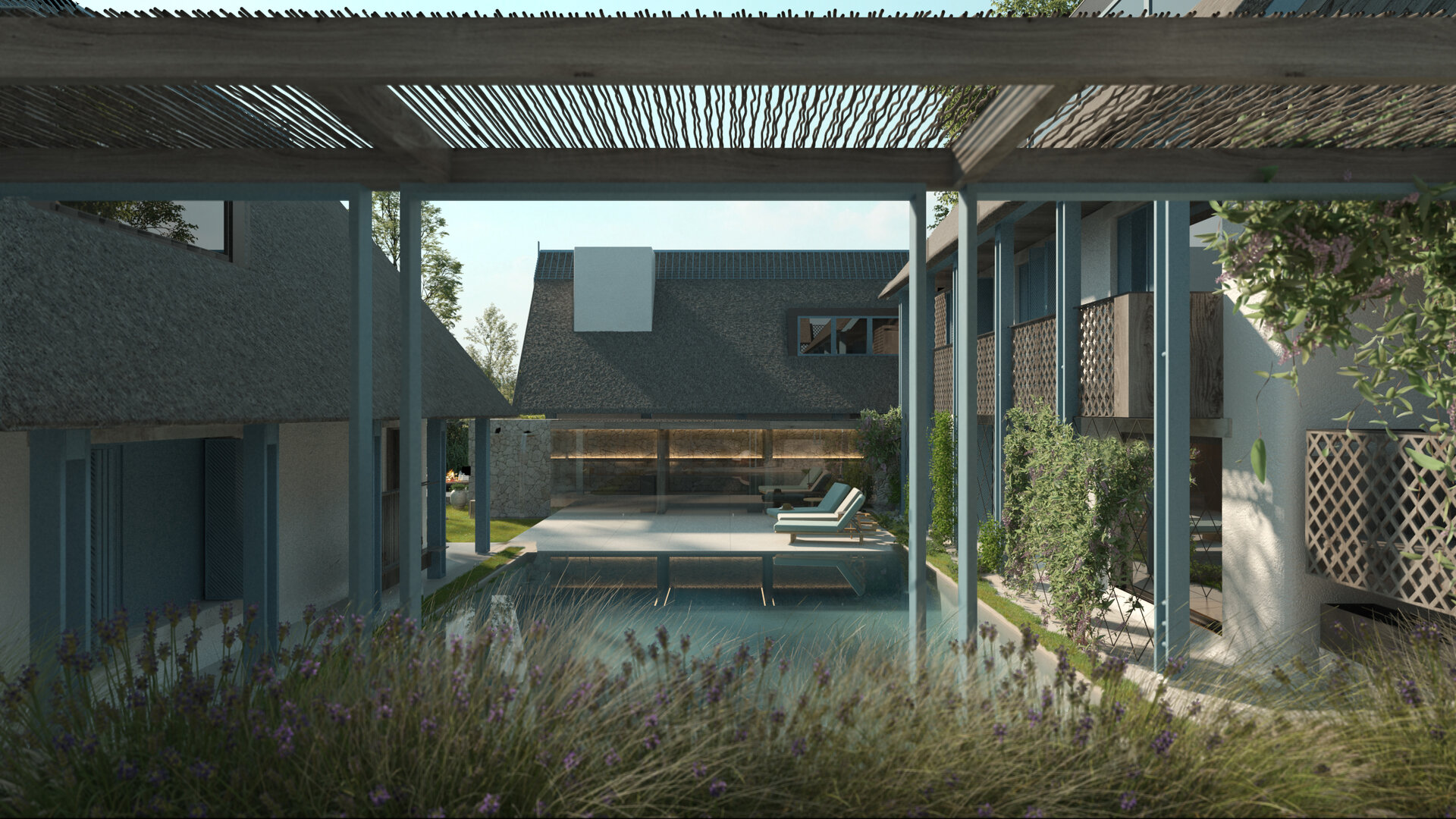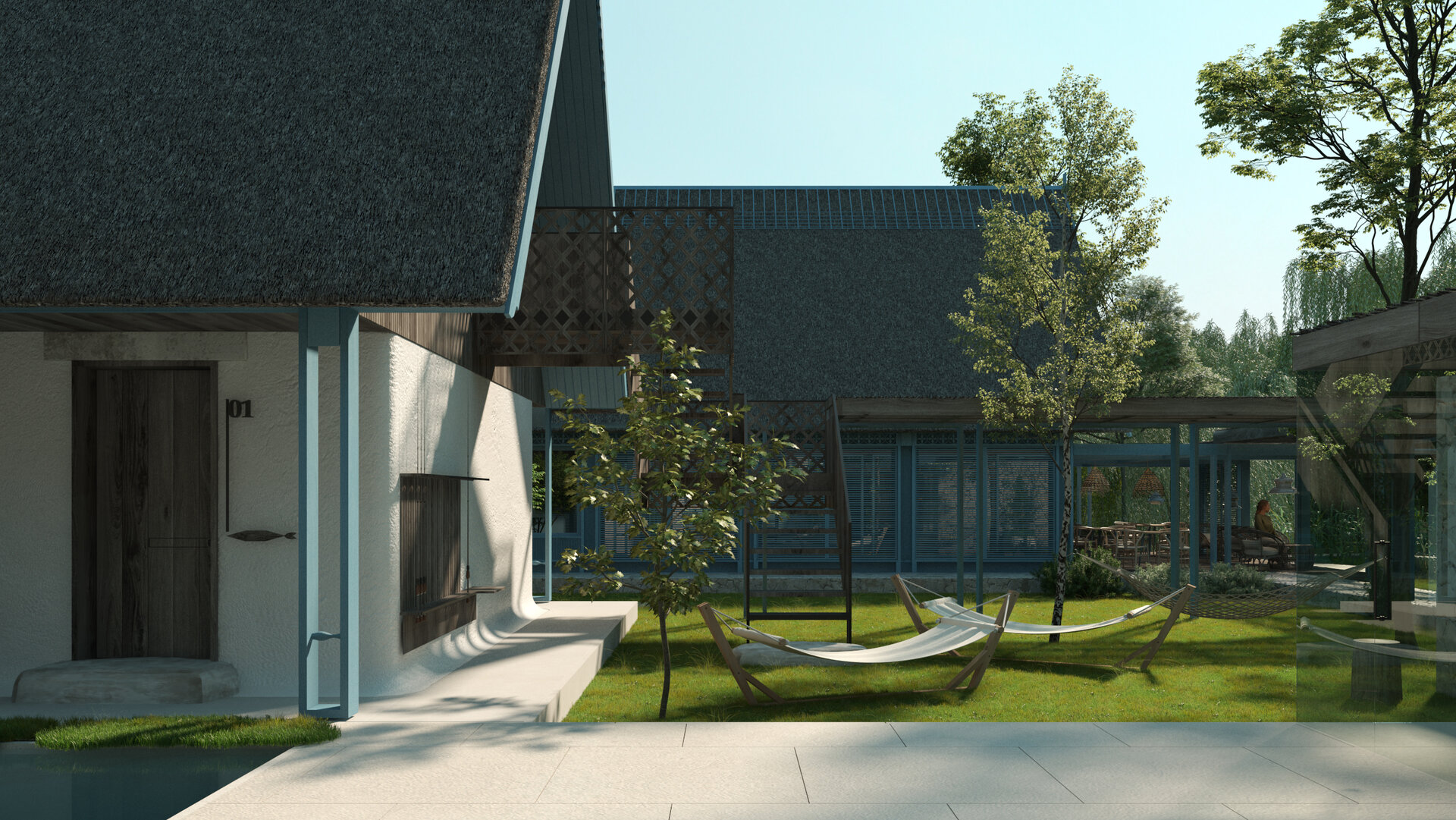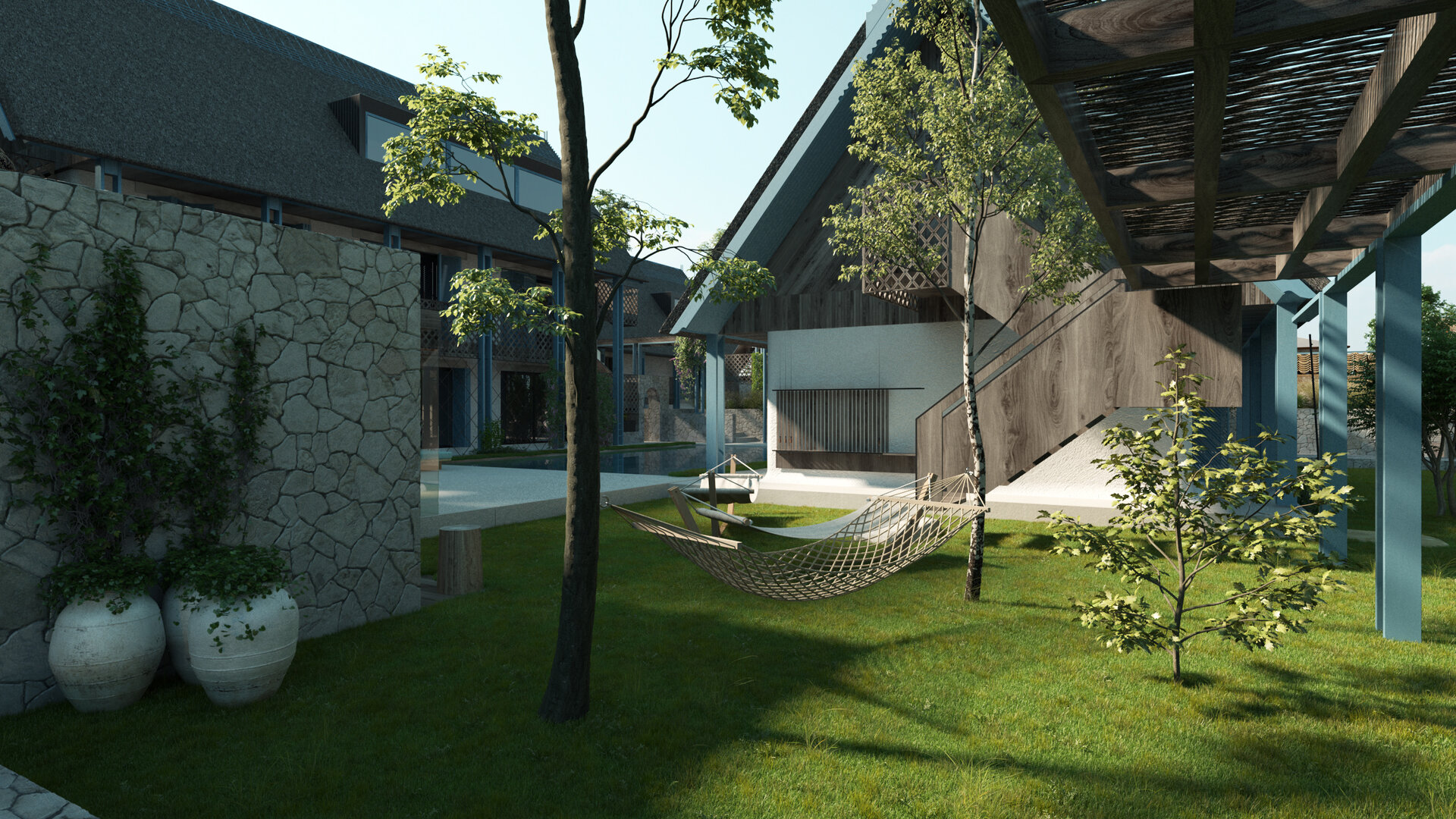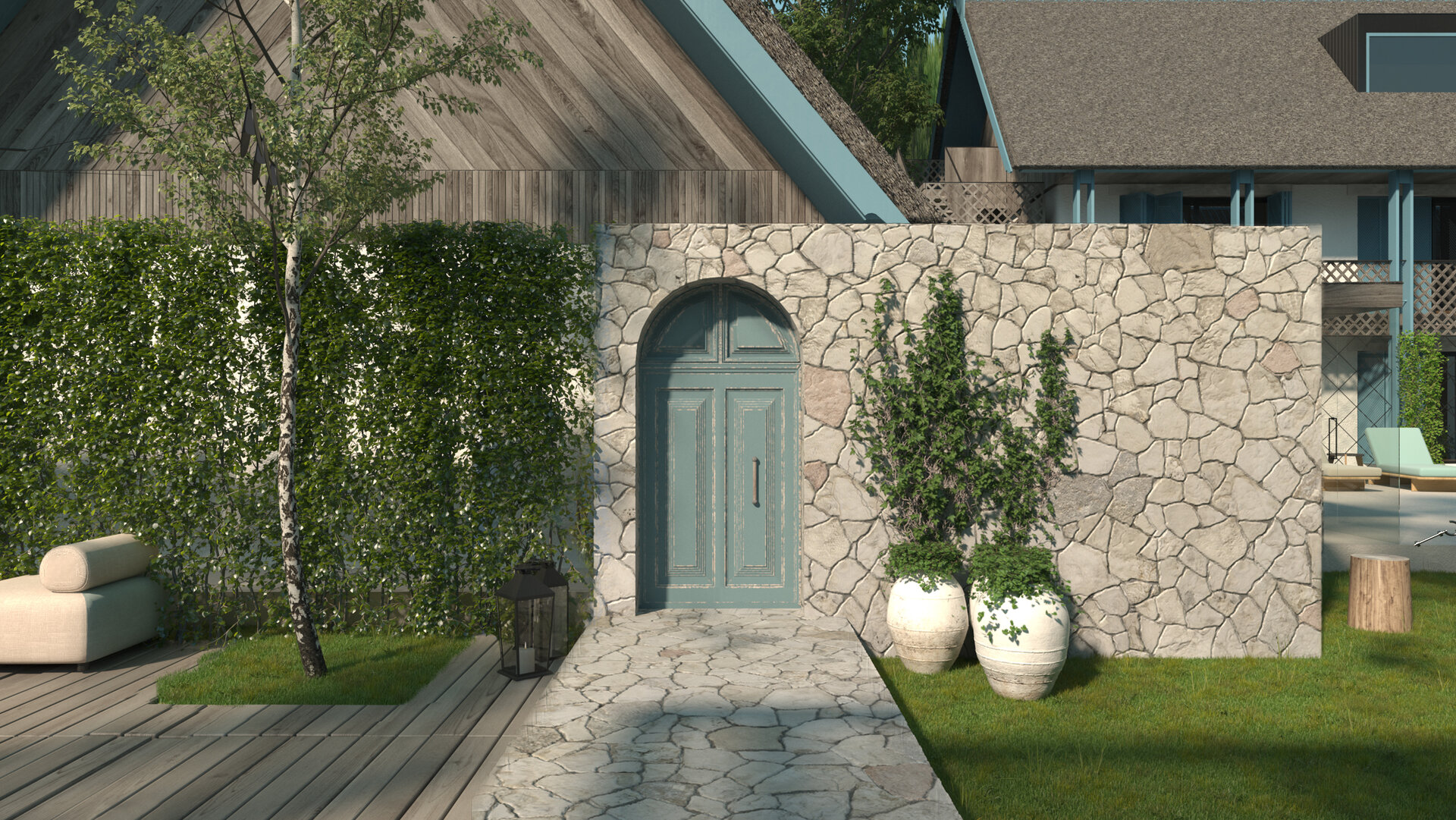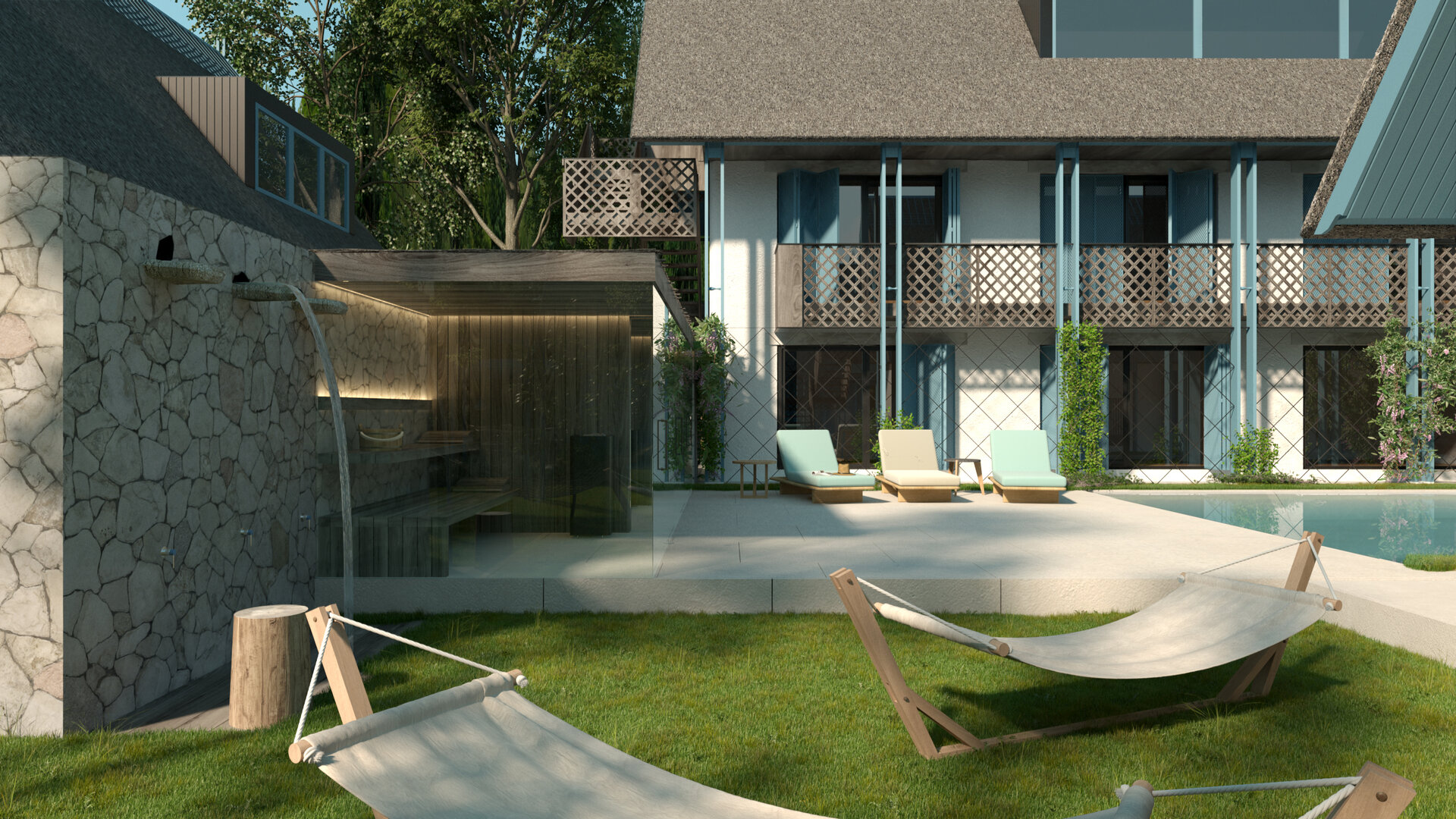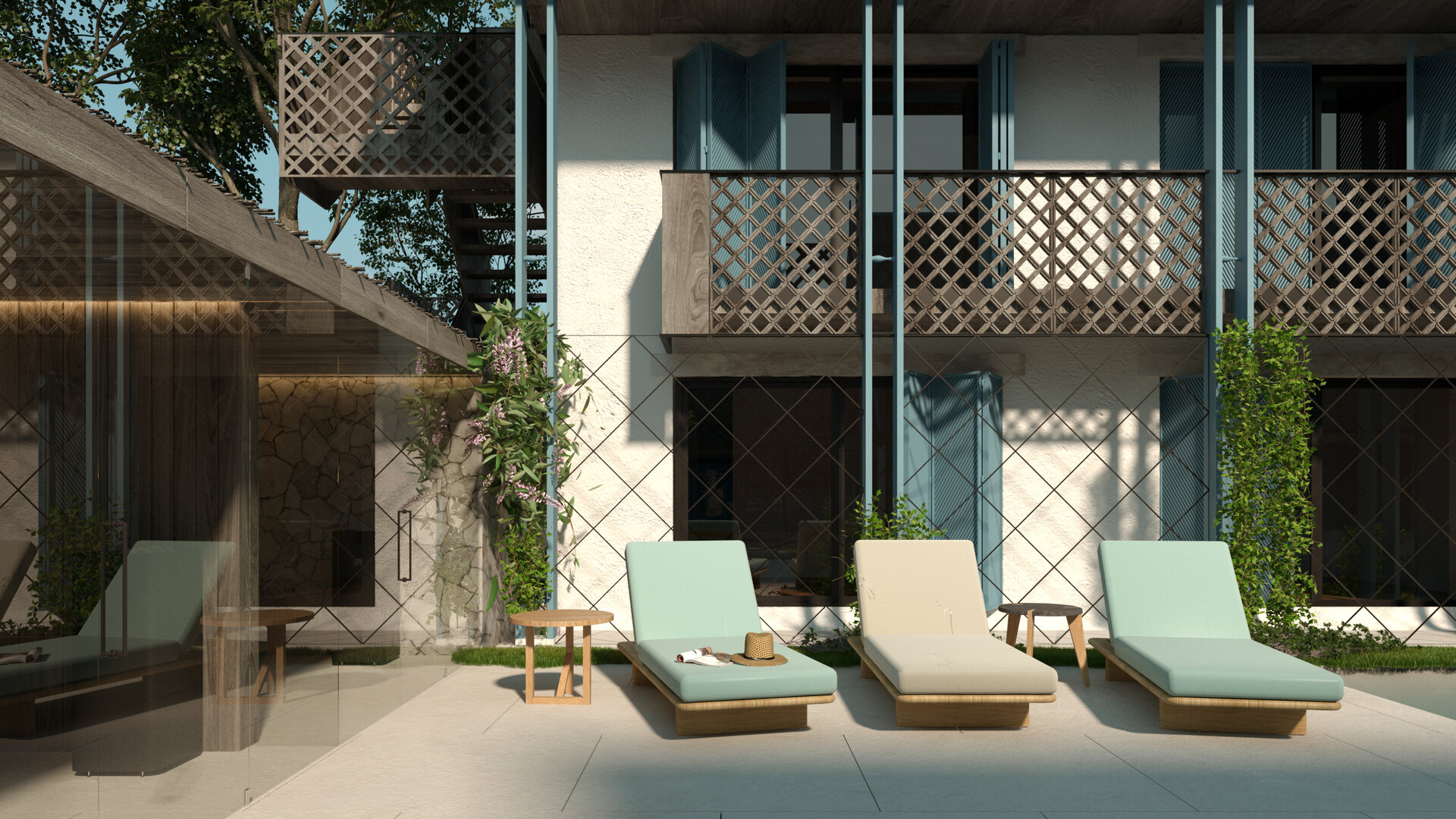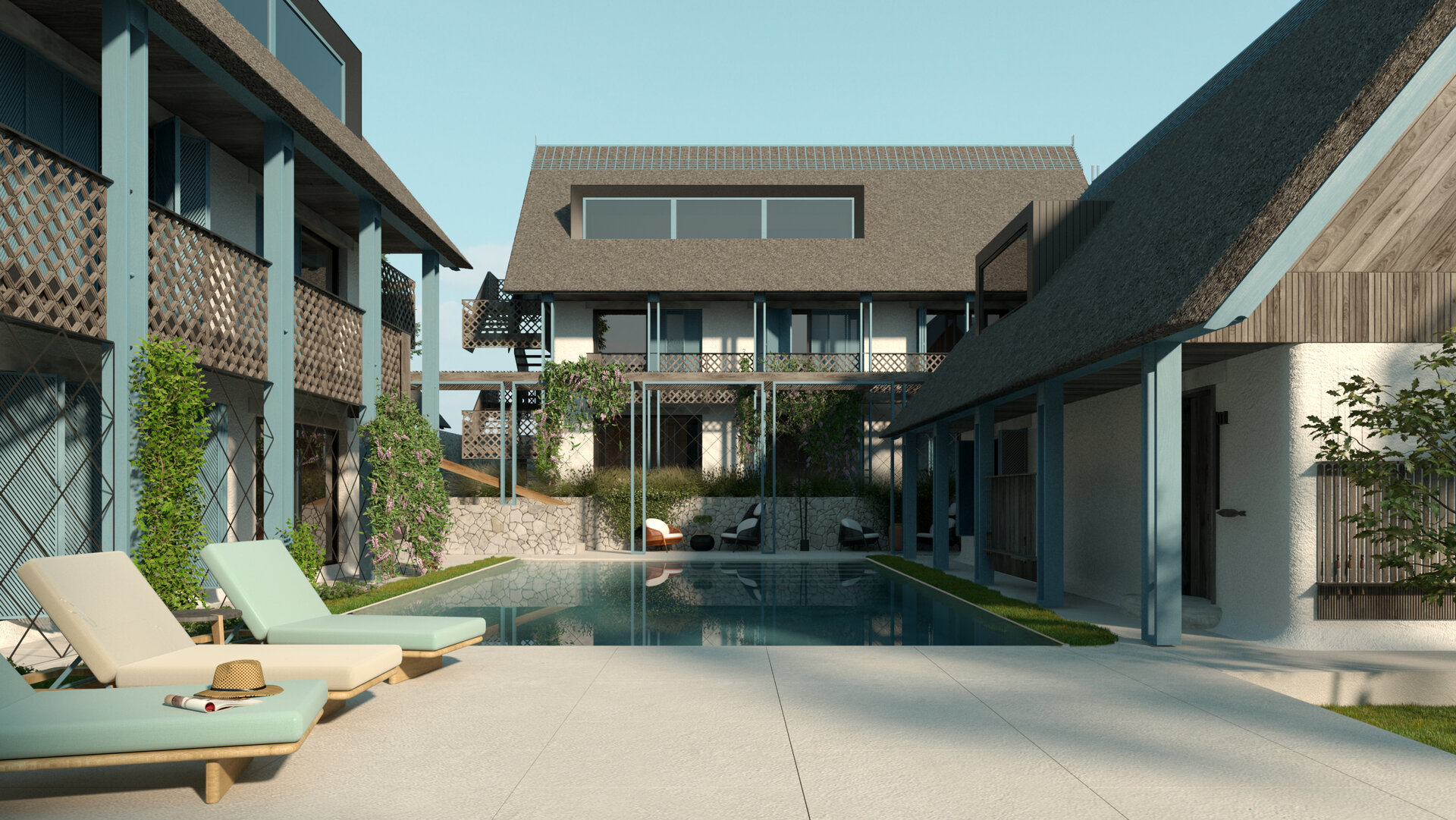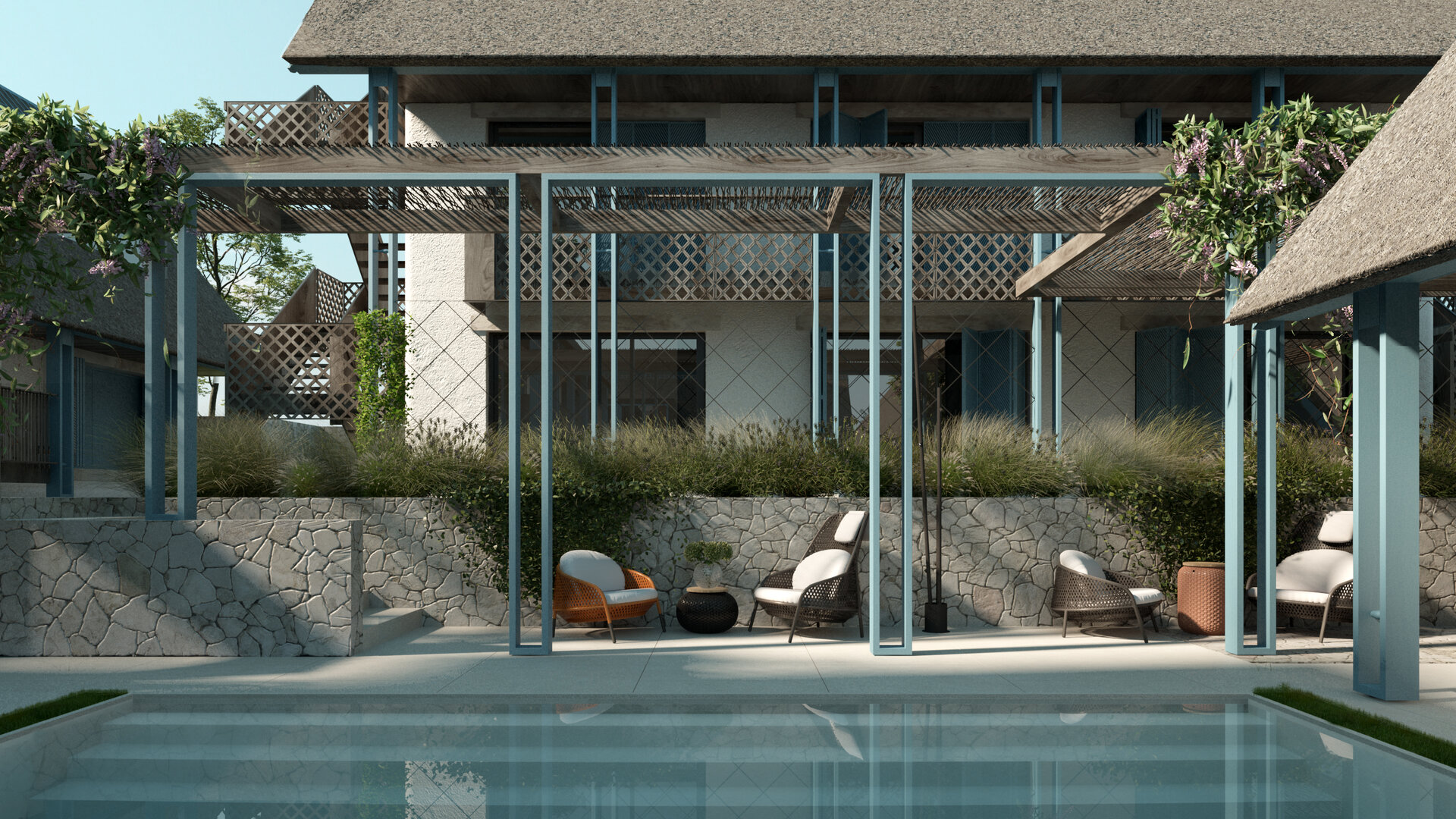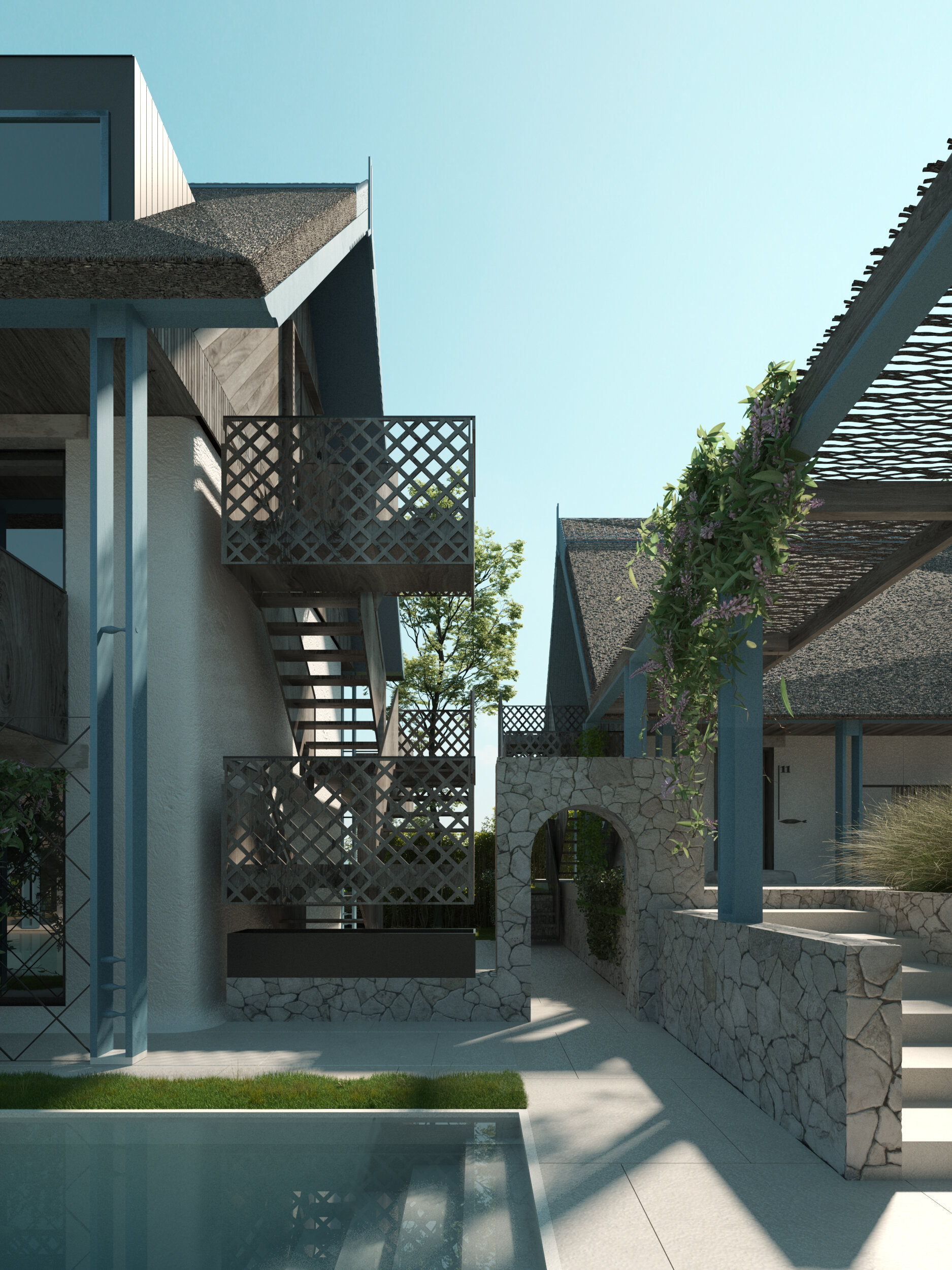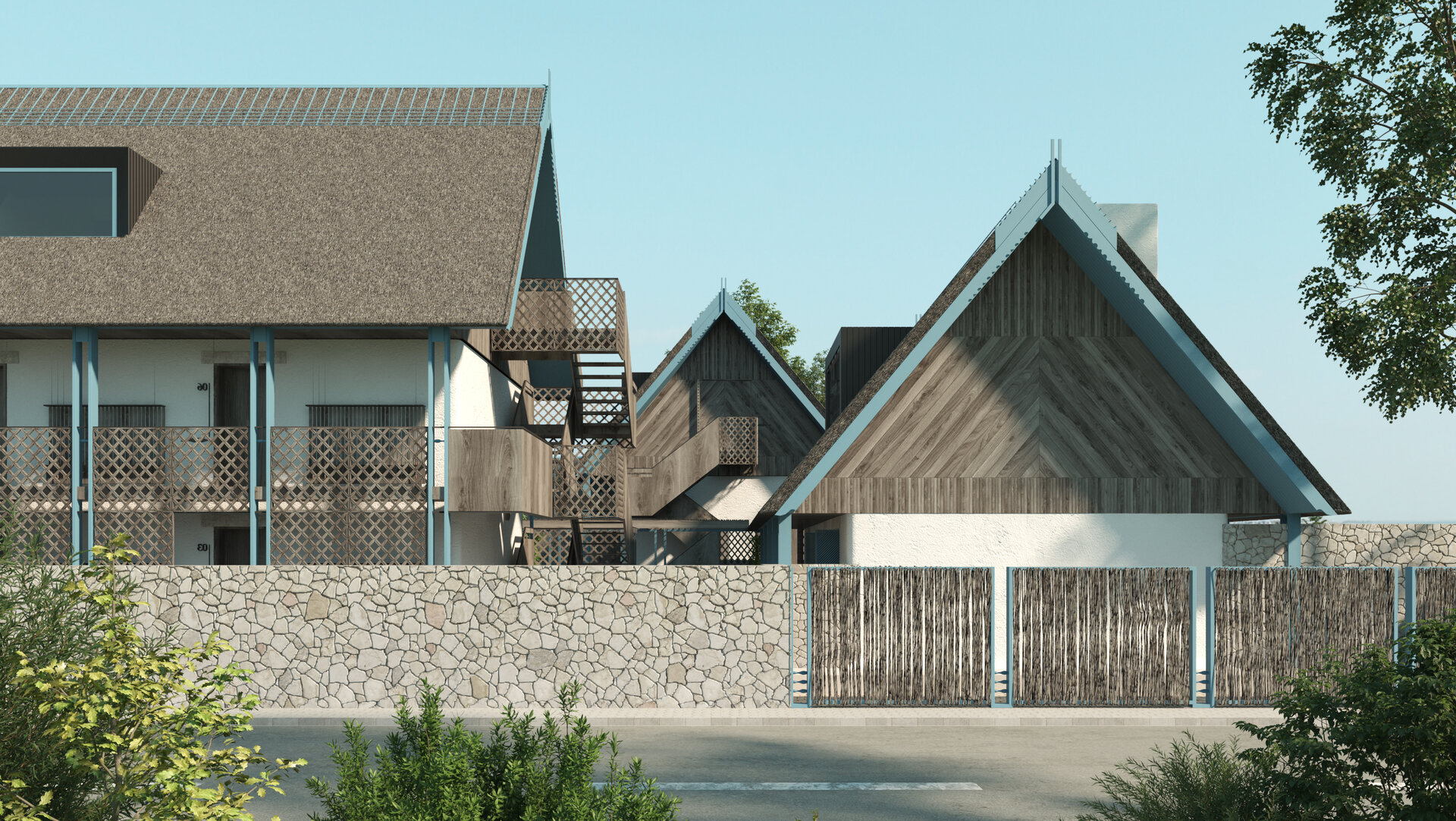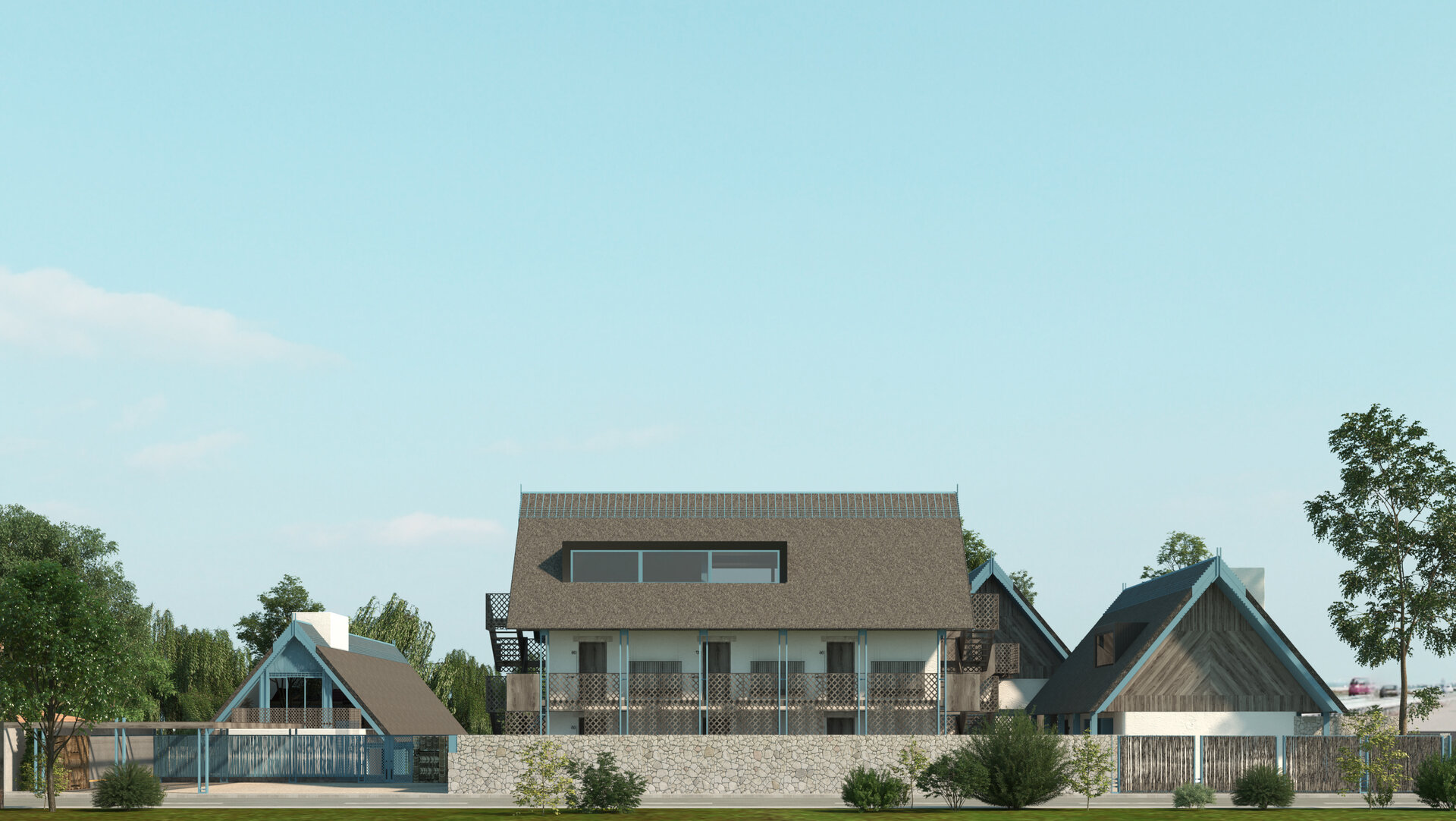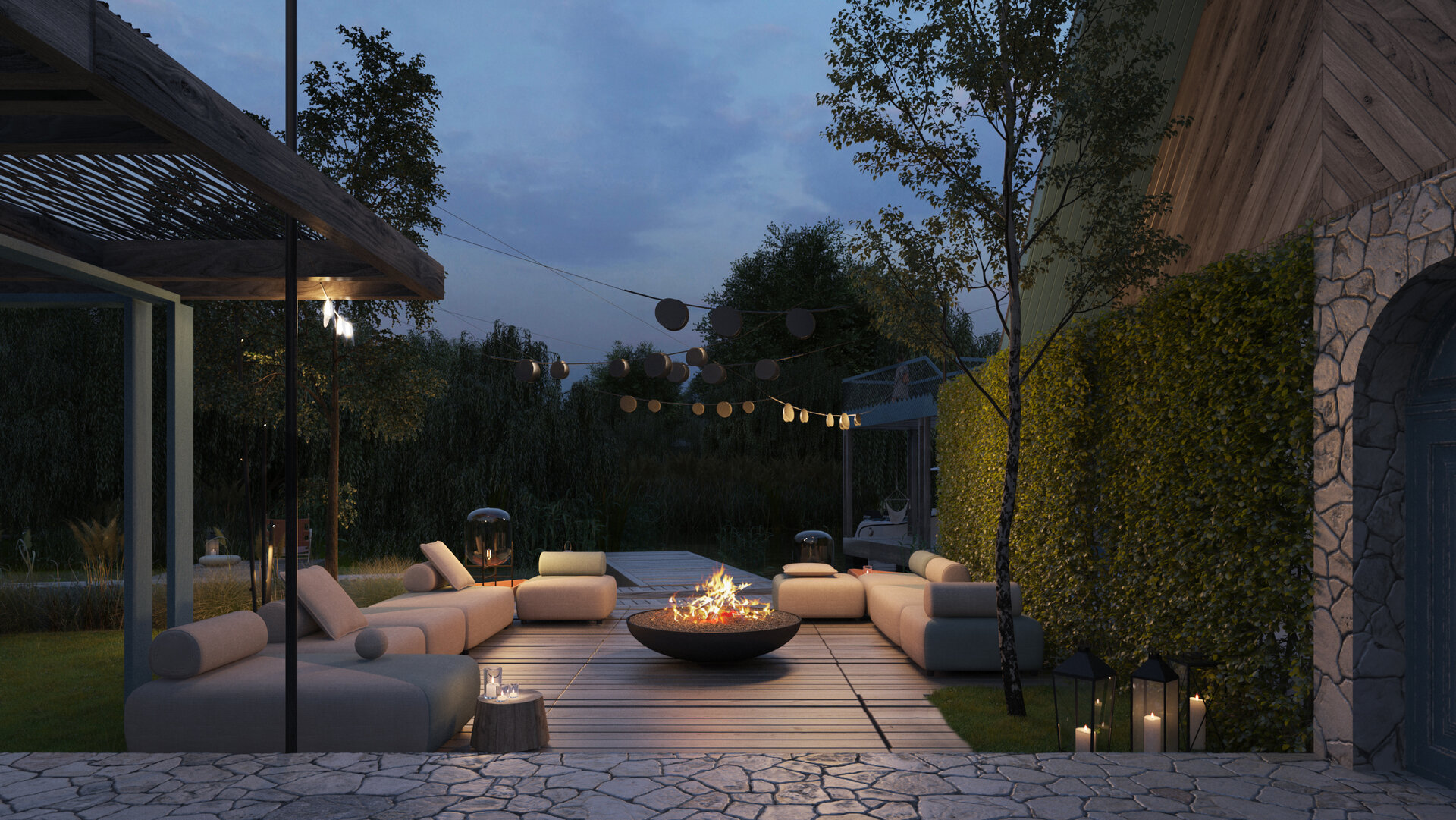
Biota Resort Dunavățul de jos
Authors’ Comment
The dynamics of the population clearly determine the architectural horizon of the Delta area. Dunavățu de Jos is a village that has a large majority of ethnical Russian population that has lived here since the beginnings of the anthropological landscape. The architectural proposal wants to harness this local heritage by transcending the formal level, searching in the intangible sphere.
The core of the space is represented by the exterior fireplace, a symbol of the traditional fire and also a gathering place around which the houses are positioned. The buildings are therefore outlined through negative space and are revolving around the free space and the particular craftmanshift: fishing. In this way the relationship with the water is interpreted, where the shore and the Dunavăț Channel find themselves in a permanent conversation.
The configuration reveals itself as an inversion of the typical chronology in which the experiences are dictated by the physical environment. In this place the physical spatial universe is dependent on the interior one which shapes the former deeply. After the interior world is unveiled it is obvious that it couldn’t have been the other way around.
Home fulfills its sheltering role. The sheltering-home has thick and introverted walls with traditional clay and has a surrounding portico. The portico has a different relationship with the exterior space generating transparent communication in the form of dialogue.
The spirituality of the community is defined as an immaterial element and becomes the bond of the resort. Materiality helps to fulfill the relationship between the earth and sky and strengthens the connection with the place. Stone, adobe, clay roof, thatch, and wood gravitate around a signification and transcend in a symbolic universe that coexists with the physical universe.
The motifs and the symbols complete the tactile sphere picture. They are emblematic for the community and come as a heritage of a certain point of its existence. The fascia and the ridge define a natural connection of the earth with the sky and faith.
The light is a bridge to the formal level and guides us through how the clay sits on the wall, through the clay fence.
All of these together speak about people, divinity, migrations, customs, family, about a certain way of home.
- Multifunctional Centre in Oradea
- School study for Amber Forest
- OML.Omuli Museum of the Horse
- Modernization and extension of Histria Museum
- Lacul Morii Park - landscape design
- Livingroom
- The Beacon
- Senior Wellness Center
- Corner House
- Flexi-pav
- Biota Resort Dunavățul de jos
- The Council of Cluj County
- Danube Waterfront in Galati
- Unirii Square, Râșnov
- Orangery
- Competition Sentmenat School
